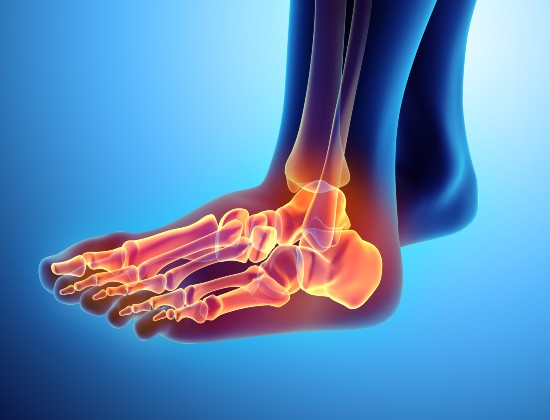Ganglions
A ganglion is a benign (harmless) lump filled with a jelly-like fluid that usually originates from a tendon sheath or an underlying joint capsule. The word ganglion means knot and describes the knot-like mass or lump that forms below the surface of the skin.
Women are more likely to get ganglion cysts than men. They most commonly appear in women aged 20-40, anywhere near a tendon or joint, usually around the wrist but also around the foot or ankle. Sometimes they are deeper in the foot, making them difficult to see or feel.
How are they caused?
Usually the cause of a ganglion is not known, although they can occasionally appear after an injury or repetitive strain to the joint area.
What are the symptoms?
- You will usually notice a lump or swelling on your foot or ankle
- Ganglions can sometimes come and go
- They can gradually become larger, making shoes uncomfortable
- Sometimes the ganglion can be close to a small nerve. If the nerve becomes compressed, it can cause numbness in the area the nerve supplies
- With some deeper ganglions, there can be a general ache or pain around a joint
Can it become worse?
Many people put up with their symptoms for a long time before seeking medical advice because the lump can appear, disappear and reappear. It can also gradually enlarge, making it difficult to wear shoes and causing a generalised foot ache.
How is it diagnosed?
A medical examination along with a discussion of your symptoms is often enough to diagnose this condition, although you may also have an ultrasound or MRI scan, and X-rays to check for arthritis.
How is it treated?
There are three options:
- Leave it alone, find more comfortable shoes, and take pain relief as advised by your doctor
- Opt for a needle aspiration to drain the fluid away. This will get rid of the lump immediately but unfortunately it can recur in over 20% of patients and may need further treatment
- Surgery: this is usually effective although there are some risks including a small chance of nerve damage (5%) or the ganglion coming back (around 5-10%)
Important: This information is only a guideline to help you understand your treatment and what to expect. Everyone is different and your rehabilitation may be quicker or slower than other people’s. Please contact us for advice if you’re worried about any aspect of your health or recovery.


